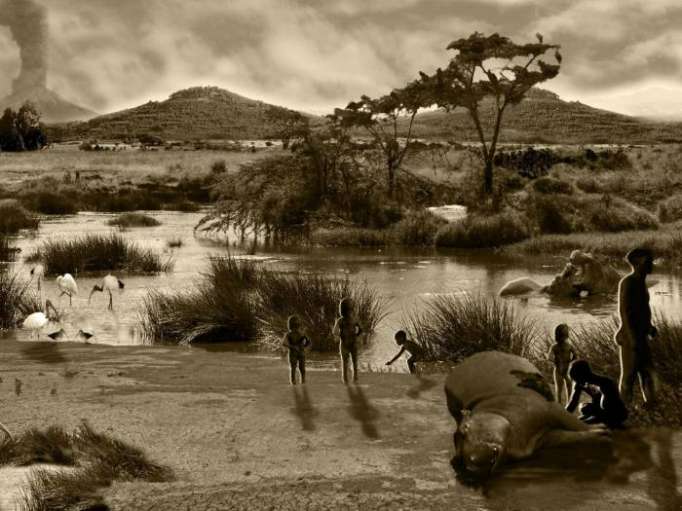The site of Melka Kunture was inhabited by a group of adults and children – potentially as young as a one year old – belonging to the prehistoric human species called Homo heidelbergensis.
Inhabitants of the site left footprints in a muddy bank by a pool, which were preserved by a layer of volcanic ash. They were accompanied by animals, stone tools and the butchered remains of a hippo.
Far from the “helicopter parents” of today, the scientists said their discovery revealed a community in which the children participated in potentially dangerous activities and were not left unsupervised by adults.
“The whole surface is littered with stone flakes and tools, and the remains of this butchered hippo carcass, so clearly there was a lot of activity there,” said Professor Matthew Bennett, an expert in ancient footprints at Bournemouth University.
“Clearly the adult members of the groups were getting on with normal activities, creating the stone tools in order to process the carcasses they had either hunted or scavenged,” said Professor Matthew Bennett, an expert in ancient footprints at Bournemouth University.
Professor Bennett explained the crucial role that footprints play for scientists studying ancient hominins – that is, human species both modern and extinct.
“Some of the early hominin finds are of children, so some of our understanding of our earliest ancestors is based on child skeletons, but that doesn’t say anything about the behaviour,” said Professor Bennett.
“Tracks are quite emotive things, and especially when you get young children that adds an extra dimension to it.”
Footprints can even be records of children at play. Another archaeological site in Namibia, for example, contained footprints left by children skipping, hopping and jumping through the mud.
In the new paper, published in the journal Scientific Reports and co-authored by Professor Bennett, the scientists described the Melka Kunture site originally discovered by researchers from the Sapienza University of Rome.
They speculated that the presence of such young children at the site was evidence infants had to “tag along” with adults in mobile hunting groups, and learn first-hand about hunting and butchering.
Professor Bennett said the study adds to mounting evidence about the lifestyle of young children in ancient times, and provides a clear contrast to parenting in modern Western societies.
“We have very clear views of what childhood should be like – you have helicopter parents looking after the child all the time, but in the past and also in modern day cultures around the world children are a lot more left to their own devices to learn by experience,” said Professor Bennett.
The behaviour of hunter gatherer societies, which is often used as an analogue for that of our prehistoric ancestors, supports these conclusions.
In those societies, “children don’t have the same privileged position they have in Western society – they are just there, and not necessarily given any special treatment,” said Professor Bennett.
“We think leaving a small child to play with stone flakes or maybe even practice a bit of hippo butchery is unusual,” he said.
“But actually it’s us that are unusual, not them.”
The Independent
More about: Archaeology
















































